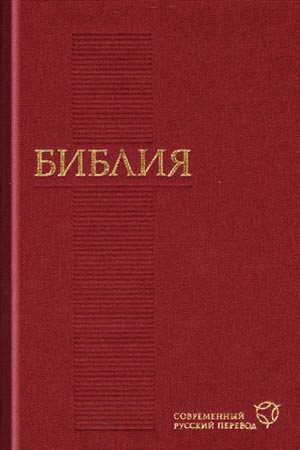
Pauline Studies - Paul and His Theology - Paul Jew Greek and Roman
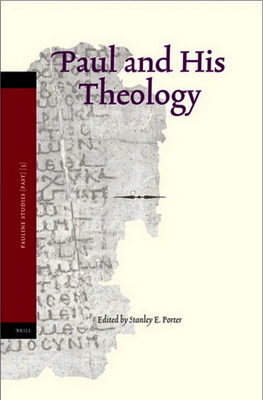
A question that has long occupied students of Paul is whether there is a definable center to his thought. A previous generation of interpreters did not find it insuperably difficult to posit that there was a central notion or even complex set of notions that motivated and centered his thinking—even though discussion of the issues surrounding “doing” New Testament theology has been with us for centuries. For many this central Pauline notion was the concept of justification by faith, but others have suggested a variety of other ideas. Finding a center for Paul’s theology has passed out of fashion in recent theological discussion, however, so that the result is often a more apparently fragmented picture of Paul’s thought. More to the point, one of the major preoccupations of much recent theologizing is the issue of whether and how biblical theology, and in particular in this case New Testament theology, and even more particularly the theology of a particular author (here, Paul), should be done.2 In this introductory essay, I wish to introduce some of the issues that surround discussion of the notion of defining Paul’s theology, always keeping an eye on the question of whether it is possible to find a center to his thought, and what that center might look like.
One of the first issues regarding coming to terms with study of Paul’s theology is that his theology is treated in a variety of different contexts. I will select six for brief mention here.
There are first, for example, individual essays on particular dimensions of Paul’s thought. The Pauline Theology Consultation/Group at the Society of Biblical Literature from 1986 to 1995 culminated in four volumes on Paul’s theology. These volumes began with the smaller letters and then proceeded to the larger ones of the seven generally considered authentic, providing for the most part treatments of individual books.5 Other volumes, including journals, might also have essays on particular topics in Paul’s thought.6 This particular volume is to a large extent an exercise in this type of Pauline research. There are fourteen different authors who are addressing various issues in Paul’s thought. Some of these essays are concerned with a number of Paul’s letters, while others with just one. Some of them are concerned with a broad topic, while others are more narrowly focused.
Paul and His Theology
Edited by Stanley E. Porter. – Leiden, Boston: BRILL, 2006. – 474 pp. – (Pauline Studies.)
ISSN 1572-4913
ISBN 90 04 15408 6
ISBN 978 90 04 15408 7
Paul and His Theology – Contents
- Is There a Center to Paul’s Theology? An Introduction to the Study of Paul and his Theology by Stanley E. Porter
- The Scriptural Foundations for Paul’s Mission to the Gentiles by Arland J. Hultgren
- Paul’s Understanding of Faith as Participation by David M. Hay
- Paul, Theologian of Electing Grace by James R. Harrison
- Paul, the Law and the Spirit by Colin G. Kruse
- Paul’s Concept of Reconciliation, Twice More by Stanley E. Porter
- Color outside the Lines: Rethinking How to Interpret Paul’s Letters by Randall K. J. Tan
- The Spirit and the Temple in Paul’s Letters to the Corinthians by John R. Levison
- Eschatology in Philippians by Heinz Giesen
- Neither Hierarchicalist nor Egalitarian: Gender Roles in Paul by Craig L. Blomberg
- Was Paul a Trinitarian? A Look at Romans 8 by Ron C. Fay
- Pauline Pneumatology and the Question of Trinitarian Presuppositions by Andrew K. Gabriel
- Paul the Exorcist and Healer by Craig A. Evans
- The Interpretation of the Letter to the Romans in Melanchthon’s Loci Communes from 1521 by René Kieffer
- Adolf Deissmann: A Reappraisal of his Work, especially his Views on the Mysticism of Paul by Jan de Villiers
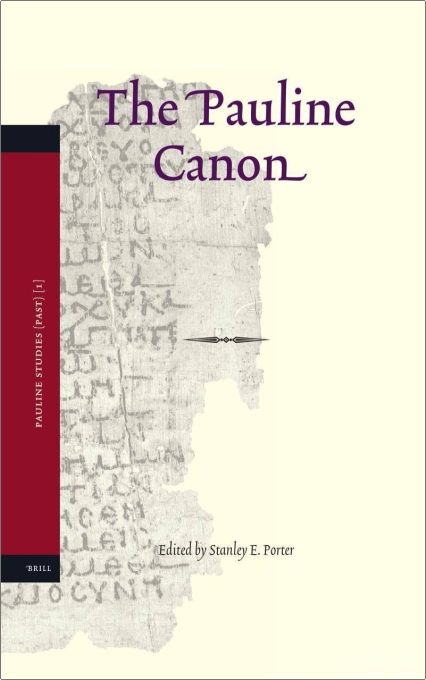
The Pauline Canon
Edited by Stanley E. Porter. – Leiden, Boston: BRILL, 2004. – 269 pp. – (Pauline Studies.)
ISSN 1572-4913
ISBN 90 04 13891 9
The Pauline Canon - Contents
- Introduction to the Study of the Pauline Canon - James W. Aageson
- The Pastoral Epistles, Apostolic Authority, and the Development of the Pauline Scriptures - Robert W. Wall
- The Function of the Pastoral Letters within the Pauline Canon of the New Testament: A Canonical Approach - M.-É. Boismard
- Paul's Letter to the Laodiceans - Detlev Dormeyer
- The Hellenistic Letter-formula and the Pauline Letter-scheme - Stanley E. Porter
- When and How was the Pauline Canon Compiled? An Assessment of Theories - Mark Harding
- Disputed and Undisputed Letters of Paul - C. O'Neill
- Paul Wrote Some of All, but not All of Any - William O. Walker, Jr.
- Interpolations in the Pauline Letters
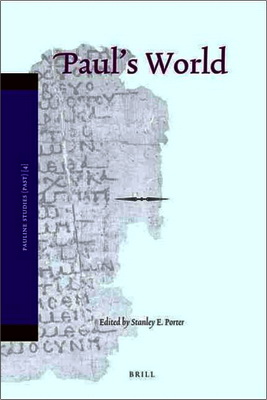
Paul’s World
Edited by Stanley E. Porter. – Leiden, Boston: BRILL, 2006. – 297 pp. – (Pauline Studies.)
ISSN 1572-4913
ISBN 978 90 04 16272 3
Paul’s World – Contents
- Defining the Parameters of Paul’s World: An Introduction - Stanley E. Porter
- The Problem of Paul’s Social Class: Further Reflections - Ronald F. Hock
- Hellenistic Schools in Jerusalem and Paul’s Rhetorical Education - Andrew W. Pitts
- Greco-Roman Concepts of Deity - Ron C. Fay
- Paul and the Athletic Ideal in Antiquity: A Case Study in Wrestling with Word and Image - James R. Harrison
- Crucifixion in the Ancient World: A Response to L.L. Welborn - Sean A. Adams
- The Languages that Paul Did Not Speak - Stanley E. Porter
- Paul at the Ball: Eccclesia Victor and the Cosmic Defeat of Personified Evil in Romans 16:20 - Michael J. Thate
- Paul, the Cults in Corinth, and the Corinthian Correspondence - Panayotis Coutsoumpos
- Ephesians 5:18–19 and Religious Intoxication in the World of Paul - Craig A. Evans
- The Letter to Philemon: A Discussion with J. Albert Harrill - Tobias Nicklas
- Some Rhetorical Techniques in Acts 24:2–21 - Craig S. Keener
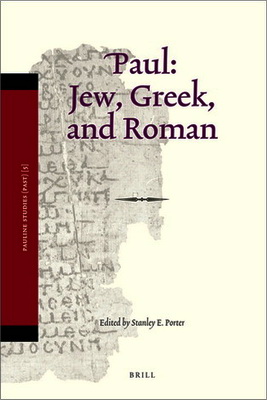
Paul – Jew, Greek, and Roman
Edited by Stanley E. Porter. – Leiden, Boston: BRILL, 2008. – 388 pp. – (Pauline Studeis.)
ISSN 1572-4913
ISBN 978 90 04 17159 6
Paul – Jew, Greek, and Roman – Contents
- Paul as Jew, Greek, and Roman: An Introduction by Stanley E. Porter
- Light Giving Sources: Examining the Extent of Scriptural Citation and Allusion Influence in 1 Corinthians by H. H. Drake Williams III
- Paul’s Attitude towards the Law by Panayotis Coutsoumpos
- The Jewish Recipients of Galatians by Bas Van Os
- Unity and Diversity in Pauline Eschatology by Andrew W. Pitts
- Looking at the Metaphor of Christ’s Body in 1 Corinthians 12 by Timothy L. Carter
- Paul and the Pagans by Craig A. Evans
- Paul and the Gymnasiarchs: Two Approaches to Pastoral Formation in Antiquity by James R. Harrison
- The Polytheist Identity of the “Weak,” and Paul’s Strategy to “Gain” Them: A New Reading of 1 Corinthians 8:1–11:1 by Mark D. Nanos
- “Fleshly” versus Spirit Perspectives in Romans 8:5–8 by Craig S. Keener
- Educating the Divided Soul in Paul and Plato: Reading Romans 7:7–25 and Plato’s Republic by Joshua W. Jipp
- Adopted as Sons: The Missing Piece in Pauline Soteriology byTrevor J. Burke
- Did Paul Speak Latin? By Stanley E. Porter
- Paul the Roman Citizen: Roman Citizenship in the Ancient World and its Importance for Understanding Acts 22:22–29 by Sean A. Adams
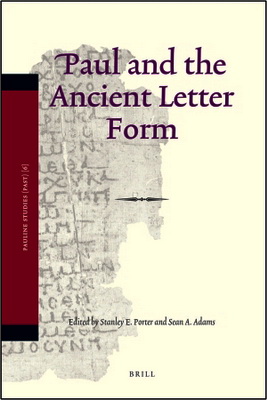
Paul and the Ancient Letter Form
Edited by Stanley E. Porter. – Leiden, Boston: BRILL, 2010. – 384 pp. – (Pauline Studies.)
ISSN 1572-4913
ISBN 978 90 04 18163 2
Paul and the Ancient Letter Form - Contents
- Pauline Epistolography: An Introduction - Stanley E. Porter and Sean A. Adams
- A Functional Letter Perspective: Towards a Grammar of Epistolary Form - Stanley E. Porter
- Paul’s Letter Opening and Greek Epistolography: A Matter of Relationship - Sean A. Adams
- How to Begin, and Why? Diverse Functions of the Pauline Prescript within a Greco-Roman Context - Philip L. Tite
- Gospel within the Constraints of an Epistolary Form: Pauline Introductory Thanksgivings and Paul’s Theology of Thanksgiving - David W. Pao
- Paul’s Letter Thanksgiving - Peter Arzt-Grabner
- A Signifi cant Decade: The Trajectory of the Hellenistic Epistolary Thanksgiving - Raymond F. Collins
- Investigating the Pauline Letter Body: Issues, Methods, and Approaches - Troy W. Martin
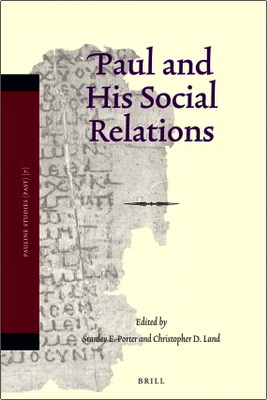
Paul and His Social Relations
Edited by Stanley E. Porter. – Leiden, Boston: BRILL, 2013. – 401 pp. – (Pauline Studies.)
ISSN 1572-4913
ISBN 978-90-04-24211-1 (hardback)
ISBN 978-90-04-24422-1 (e-book)
Paul and His Social Relations – Contents
- Paul and His Social Relations: An Introduction - Stanley E. Porter and Christopher D. Land
- How Do We Define Pauline Social Relations? - Stanley E. Porter
- Paul, Timothy, and Pauline Individualism: A Response to Bruce Malina - Mark Batluck
- Paul, Patronage and Benefaction: A “Semiotic” Reconsideration - Bruce A. Lowe
- Paul and the “Social Relations” of Death at Rome (Romans 5:14, 17, 21) - James R. Harrison
- The Relationships of Paul and Luke: Luke, Paul’s Letters, and the “We” Passages of Acts - Sean A. Adams
- The Authorship of Hebrews: A Further Development in the Luke-Paul Relationship - Andrew W. Pitts and Joshua F. Walker
- The Significance and Function of References to Christians in the Pauline Literature - Christoph Stenschke
- “We Put No Stumbling Block in Anyone’s Path, so that OurMinistry Will Not Be Discredited”: Paul’s Response to an Idol Food Inquiry in 1 Corinthians 8:1–13 - Christopher D. Land
- Paul, the Corinthians’ Meal, and the Social Context - Panayotis Coutsoumpos
- The Christ-Pattern for Social Relationships: Jesus as Exemplar in Philippians and Other Pauline Epistles - Mark Keown
- Honouring Epaphroditus: A Suffering and Faithful Servant Worthy of Admiration - H.H. Drake Williams, III
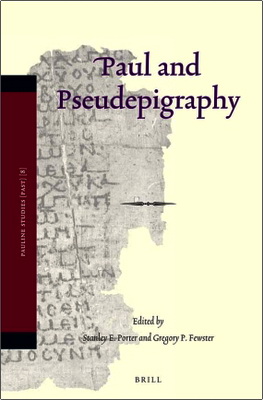
Paul and Pseudepigraphy
Edited by Stanley E. Porter. – Leiden, Boston: BRILL, 2013. – 391 pp. – (Pauline Studies.)
ISSN 1572-4913
ISBN 978-90-04-25668-2 (hardback)
ISBN 978-90-04-25847-1 (e-book)
Paul and Pseudepigraphy - Contents
On Pauline Pseudepigraphy: An Introduction - Stanley E. Porter and Gregory P. Fewster
I. Critical Issues in Pauline Pseudepigraphy
- Authorship and Pseudepigraphy in Early Christian Literature: A Translation of the Most Important Source Texts and an Annotated Bibliography - Armin D. Baum
- Pauline Chronology and the Question of Pseudonymity of the Pastoral Epistles - Stanley E. Porter
- Hermeneutical Issues in Canonical Pseudepigrapha: The Head/Body Motif in the Pauline Corpus as a Test Case - Gregory P. Fewster
- Style and Pseudonymity in Pauline Scholarship: A Register Based Configuration - Andrew W. Pitts
- The Problem of the Pastoral Epistles: An Important Hypothesis Reconsidered - Jermo van Nes
II. Pauline Pseudepigraphy within the Christian Canon
- A Deutero-Pauline Mystery? Ecclesiology in Colossians and Ephesians - Sigurd Grindheim
- The Imitation Hypothesis: Pseudepigraphic Remarks on 2 Thessalonians with Help from Documentary Papyri - Christina M. Kreinecker
- Christology, Greco-Roman Religious Piety, and the Pseudonymity of the Pastoral Letters - Linda L. Belleville
- Hebrews as an Instructional Appendix to Romans - Clare K. Rothschild
- The Epistolary Closing of Hebrews and Pauline Imitation - Bryan R. Dyer
III. Pauline Pseudepigraphy outside the Christian Canon Dusting Off a Pseudo-Historical Letter: Re-Thinking the Epistolary
- Aspects of the Apocryphal Epistle to the Laodiceans - Philip L. Tite
- The Pseudepigraphical Correspondence between Seneca and Paul: A Reassessment - Ilaria L. E. Ramelli
- The Heretics’ Apostle and Two Pauline Pseudepigrapha from Nag Hammadi - Michael Kaler
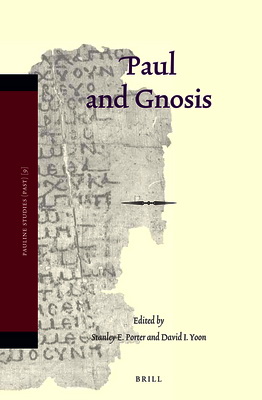
Paul and the Gnosis
Edited by Stanley E. Porter. – Leiden, Boston: BRILL, 2016. – 236 pp. – (Pauline Studies.)
ISBN 1572-4913
ISBN 978-90-04-31668-3 (hardback)
ISBN 978-90-04-31669-0 (e-book)
Paul and the Gnosis – Contents
Introduction to Paul and Gnosis - Stanley E. Porter and David I. Yoon
Part 1. Paul and Knowledge
- What Do We Mean by Speaking of Paul and Gnosis/Knowledge? A Semantic and Frequency Investigation - Stanley E. Porter
- Paul’s Thorn and His Gnosis: Epistemic Considerations - David I. Yoon
- Paul’s Concept of the Resurrection Body in 1 Corinthians 15:35–58 - Andrew W. Pitts
- Detecting Allusions in the Pauline Corpus: A Method - Adam Z. Wright
- Paul, the Expected Eschatological Phinehas-Elijah Prophet Law-Giver - Chris S. Stevens
Part 2. Paul and Gnosticism
- “The Apostle of the Heretics”: Paul, Valentinus, and Marcion - James D. G. Dunn
- Is There a Heresy in the Pastorals? A Sociolinguistic Analysis of 1 and 2 Timothy via the Ethnography of Communication Theory - Hughson T. Ong
- Paul at Nag Hammadi - Michael Kaler
- The Concept of Fullness in Paul and the Pauline Tradition: A Cosmological Approach to Paul and Gnosis - Tilde Bak Halvgaard
- The Strong/Gnosis, Paul, and the Corinthian Community - Panayotis Coutsoumpos

Paul and Scripture
Edited by Stanley E. Porter. – Leiden, Boston: BRILL, 2019. – 452 pp. – (Pauline Studies.)
ISSN 1572-4913
ISBN 978-90-04-39218-2 (hardback)
ISBN 978-90-04-39151-2 (e-book)
Paul and Scripture – Contents
- 1. Introduction to Paul and Scripture - Stanley E. Porter and Christopher D. Land
Part 1. General Essays
- 2. Paul and His Use of Scripture: Further Considerations - Stanley E. Porter
- 3. Paul’s Use of Nomos: Torah, Law, or Custom? - Ryder A. Wishart
- 4. The Reception of 1 and 2 Maccabees in the Letters of Paul - Gerbern S. Oegema
Part 2. Romans
- 5. Paul’s Use of Scripture in Romans - Colin G. Kruse
- 6. Obedience in Covenant and in Christ: Paul’s Theodicean Solution - Tom Holmen
- 7. The Centrality of Jewish Scripture in Paul’s Theology: Romans 3 as a Case in Point - Jey J. Kanagaraj
Part 3. The Corinthian Letters
- 8. From the Perspective of the Writer or the Perspective of the Reader: Coming to Grips with a Starting Point for Analyzing the Use of Scripture in 1 Corinthians - H. H. Drake Williams, III
- 9. Paul’s View of Αδιάφορα in 1 Corinthians 8–10 - Panayotis Coutsoumpos
- 10. Raised on the Third Day According to the Scriptures: Hosea 6:2 in Jewish Tradition - John Granger Cook
- 11. Paul on Apokatastasis: 1 Corinthians 15:24–28 and the Use of Scripture - Ilaria Ramelli
- 12. The Rhetoric of “Consolation” in 2 Corinthians 1:3–11/7:4–13 in the Context of the Jewish and Graeco-Roman Consolatory Literature - James R. Harrison
- 13. It’s Not Like Moses Veiled So That the Israelites Didn’t Stare: a Hypothesis Regarding Paul’s Understanding of Exodus 34 - Christopher D. Land
- 14. The Centrality of Scripture in 2 Corinthians 8–9 - Craig L. Blomberg
Part 4. Other Pauline Letters
- 15. The Sinai-Mεσίτης Tradition in Galatians 3:19–20 - Linda L. Belleville
- 16. The Use of Job 13:16 in Philippians 1:19: Direct Quotation or Allusion? - Lau Chi Hing
- 17. Reception of the Old Testament in 1 Thessalonians and in Philippians? - Markus Öhler
- 18. The Pastoral Epistles and the Scriptures of Israel - Arland J. Hultgren
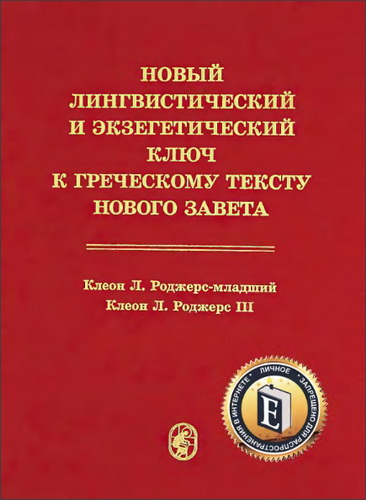
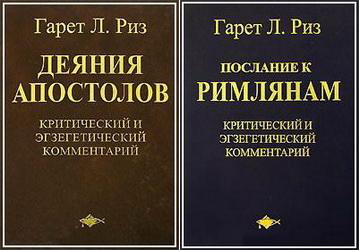

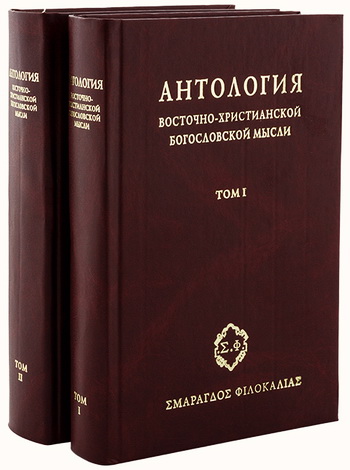
Комментарии (1 комментарий)
Спасибо огоромное - это ценное собрание по паулинистике!